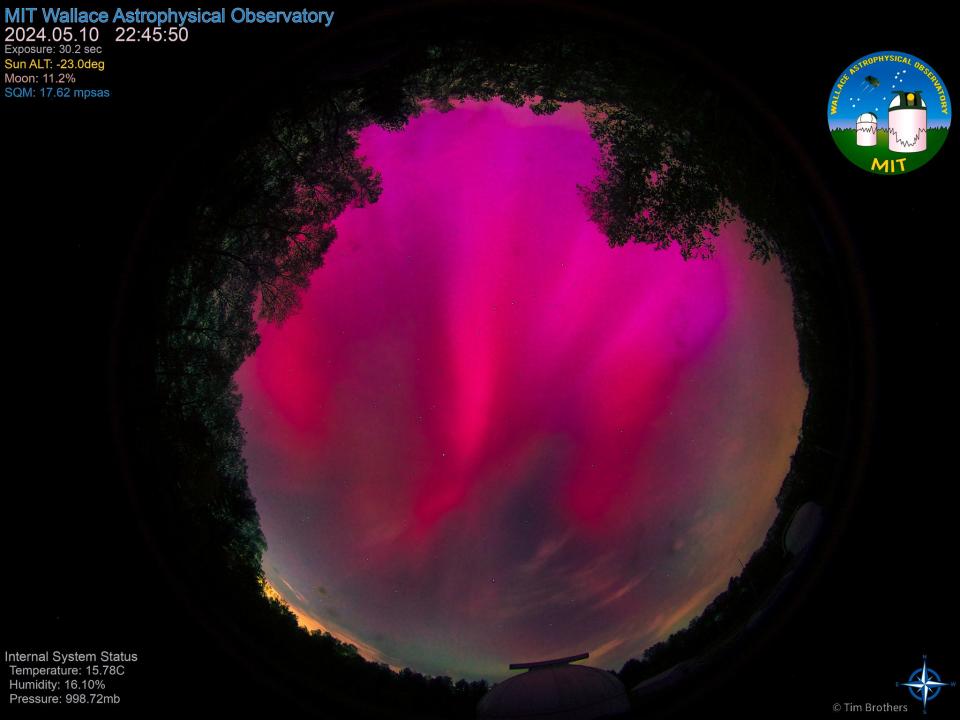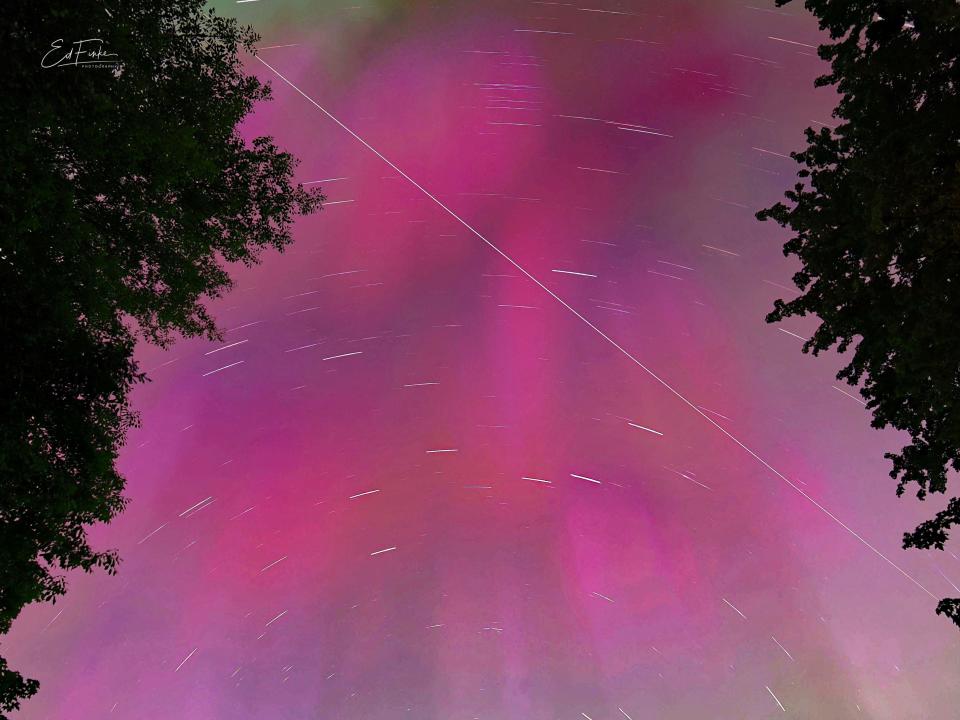Sunspot that caused spectacular northern lights show in May could create another show soon
A dazzling display of the aurora, or as they are better known, the Northern Lights, captivated the U.S. in early May, filling social media channels.
And you may be able to see them again soon.
The sunspot that created the May 10 event is moving back into the position capable of creating another show.
"Just as Earth rotates on its axis making a complete rotation every 24 hours, the sun spins on an axis making a complete rotation in 27 days," Geophysical Institute of Fairbanks, Alaska wrote. That 27-day rotation completes on June 6, meaning it's possible the northern lights will be visible at low latitudes again then.
The event will coincide with a new moon, which would make the northern lights easier to see.
"It will align nicely," Ryan French, a solar physicist at the National Solar Observatory (NSO) in Boulder, Colorado, told Live Science. "As soon as the sunspot starts to appear, we will enter the window of opportunity [for solar flares]."
That being said, it's far from certain, with many cautioning that the event in May was rare and it would be unlikely (though not impossible) for a storm of that magnitude to be seen again so soon.
What has the Space Weather Prediction Center said?
The Space Weather Prediction Center, a branch of the National Oceanic and Atmospheric Administration (NOAA), makes short-tern predictions for northern lights, so June 6 is still to far away a formal forecast.

Why are the northern lights so active?
The sun goes through phases on an 11-year solar cycle. Right now, it's nearing the peak of that cycle, known as "solar maximum." During this moment, the sun emits more solar flares and coronal mass ejections, massive bubbles of plasma threaded by rejected magnetic field lines.
The result is that the northern lights can happen more frequently and cover larger swaths.

The aurora that showed up in mid-May was the strongest display of the Northern Lights in the last 20 years, according to Massachusetts Institute of Technology Technical Instructor and Observatory Manager Tim Brothers.
The last event that big occurred in October 2003, according to the NOAA.
On May 15, following the aurora display, Brothers told USA Today Network, "it still seems to be pretty active, I'm hoping we can see it again."
Places to check for northern lights forecast
If you want a chance at seeing the Northern Lights, here are some websites you can monitor the sun's activity:
This article originally appeared on wickedlocal.com: Northern Lights may return to New England in early June. What to know.

